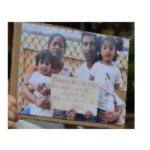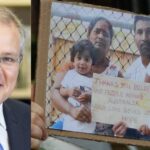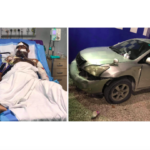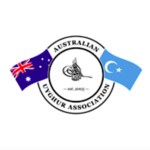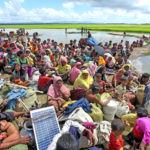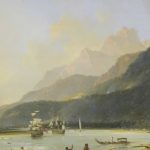The Continuing Tamil Genocide in Sri Lanka: An Interview With TRC’s Charanja Thavendran
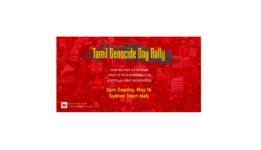
Towards the end of the decades-long Sri Lankan civil war, the Liberation Tigers of Tamil Eelam (LTTE) had effectively formed a functioning military state, with its own infrastructure, in the northern Tamil majority region of the island. And the town of Kilinochchi was its capital.
The LTTE had been fighting against the Sri Lankan government – which serves the interests of the Sinhalese majority – in an attempt to see the formation of an independent state, known as Tamil Eelam. And peace process negotiations had been taking place over 2002 to 2006.
However, in 2008, the Sri Lankan military launched one final offensive upon LTTE held areas. Colombo warned the handful of UN staff still in Kilinochchi to evacuate, as it couldn’t guarantee their safety. As they left, Tamils pleaded with them to stay, as they’d be slaughtered without witnesses.
Then it happened, Sri Lankan forces took Kilinochchi in January 2009 and proceeded to blatantly kill, maim and rape Tamil civilians. Colombo went on to tell Tamils to enter a no-fly zone it established on a thin strip of land bordered by the sea in Mullivaikkal, and it would guarantee their lives.
These days, the conservative estimate is Sri Lankan forces murdered 70,000 Tamils civilians, as they moved in on the populations the government promised to save, during what’s now known as the Mullivaikkal massacre, which ended in May 2009.
A non-inclusive government
The civil war in Sri Lanka may have ended more than a decade ago, however the extreme repressions Tamils face and the militarisation of their homelands continues to this day.
Indeed, as of late 2019, the ministers who oversaw the massacre are back in power.
In February this year, the Tamil and Muslim communities of Sri Lanka united to hold the Pottuvil to Polikandy (P2P) rally, which was a five day demonstration calling on the international community to step in and protect their rights.
A fair go, but not for Tamils
In early 2013, then shadow immigration minister Scott Morrison paid a visit to Sri Lanka to discuss the refugee situation. On return, the current PM announced that if elected, a Coalition government would instate a policy of turning back boats carrying Tamil asylum seekers from Sri Lanka.
Right now, Morrison has a Tamil family of four – including their two Australian-born daughters – in long-term detention on Christmas Island. And in mid-2014, as immigration minister, the PM oversaw the detainment of 157 Tamil refugees at sea for four weeks, prior to sending them to Nauru.
Last month, the Morrison government gifted four aerial drones to the Sri Lankan police for the purpose of “crime fighting”. The local Tamil Refugee Council (TRC) criticised the move, maintaining that Colombo will simply be utilising Canberra’s machinery to further oppress the Tamil population.
Tamil Genocide Day
The Tamil Refugee Council is an Australia-based grassroots organisation advocating for the rights of Tamil refugees in Australia and throughout Asia. And TRC is about to hold Tamil Genocide Day rallies in both Sydney and Melbourne on 16 May.
Sydney Criminal Lawyers spoke to Tamil Refugee Council spokesperson Charanja Thavendran about the alleged war criminals running the Sri Lankan government, why our government’s treatment of Tamils is problematic, as well as what’s to be expected at the genocide day rallies.
Firstly, the decades-long Sri Lankan civil war between the majority Sinhalese government and the Eelam Tamils in the north of the country came to an end in 2009.
However, as the Tamil Refugee Council explains the attempted genocide continues.
Charanja ,what is the situation like for Tamils on the ground in Sri Lanka today?
Sri Lanka still remains a dangerous place for Tamil people due to the active repression of Tamil citizens.
This can be observed through the continued police and military occupation of approximately 3,000 acres, according to the Sinhalese government.
And with the continued police and military presence in predominantly Tamil areas, instances of police brutality haven’t deescalated post-the national liberation struggle, but have rather escalated with the recent election of president Gotabaya Rajapaksa.
A recent instance of police brutality was the arrest, detainment and interrogation of the mayor of Jaffna, Viswalingam Manivannan, by the counterterrorist investigation division.
This sort of action clearly indicates suppression of voices critical of Tamil oppression, and it furthermore depicts the fascist tactics of silencing opinions that do not align with the government narrative.
The Sri Lankan government continues to engage in the cultural genocide of Eelam Tamils and other minorities. This is done through rewriting Tamil narratives and through the destruction of Tamil landmarks and artifacts.
Recently, the Mullivaikkal memorial was demolished, which was remembering the Mullivaikkal massacre. This was done during the cover of night with a strong military presence.
Additionally, in Mullivaikkal this year, a Hindu temple – Hinduism being predominately worshiped by Tamil people – was demolished to be replaced by a Buddhist temple, which is the primary religion of the Sinhalese majority.
These acts are proponents of cultural genocide, as the destruction of Tamil artifacts aims to deemphasise the significance of Tamil Hindu monuments and overstate the importance of Sinhalese Buddhist landmarks.
The best way to encapsulate the Sri Lankan situation for Tamil people in the homeland can be ascertained by how freely Sri Lankan government officials speak about Tamil oppression.
The Sri Lankan public security minister Sarath Weerasekera has been very vocal about teargassing and arresting Tamil protesters.
The minister has warned that “now we have their photos and we have their vehicle numbers, we know who these individuals are. We can sue them and confiscate all their vehicles and put them in prison.”
This quote speaks for itself in regard to the dangers Tamil people living in Sri Lanka face.
The oppressive rule the Tamil population in Sri Lanka is subjected to is said to have intensified with the re-election of Mahinda Rajapaksa as the nation’s prime minister in November 2019.
Why is this the case?
During the national liberation struggle for Tamil Eelam, Mahinda Rajapaksa was the president and his brother Gotabaya Rajapaksa – the current president – was the defence secretary.
Back then, under the brothers’ term, many war crimes and genocidal acts were committed by the Sri Lankan government.
These included the intentional shelling of civilians, hospitals and humanitarian operations. All these war crimes have never been accounted for and there hasn’t been any real consequences imposed for these war criminals.
So, the re-election of Mahinda and Gotabaya gives Tamils increased fear, as these war crimes have been ignored and there’s a continuing implicit threat.
Furthermore, many people in the prime minister’s cabinet are war criminals. Some of them have been denied entry into countries – such as Australia and the US – so they’ve been recognised as war criminals by other nations.
Essentially, the highest positions of power in Sri Lanka are occupied by war criminals, who are dogmatically opposed to Tamil rights.
The ease of violent speech against Eelam Tamils and Muslims in Sri Lanka, the arrest of Tamil public figures – such as the mayor of Jaffna – and the continued persistent destruction of Tamil culture has been reflected in Tamil protest in the homeland.
This year, the Pottuvil to Polikandy rally was established for the first time on Tamil Oppression Day, which is also known as Sri Lankan Independence Day.
The protest, whilst peaceful, still resulted in police brutality with a 26-year-old participant being arrested and interrogated for six hours.
The increasing repressions have essentially caused more civilians to take to the streets and protest for their rights.
However, attempts to simply voice experiences of injustice have been met with brutality and silencing sponsored by the government of Sri Lanka.
The Australian Border Force and the Australian Federal Police gave the Sri Lankan Police five aerial drones last month.
Why is the gifting of these drones problematic? And further, how has the Australian government’s track record been in terms of dealing with the government in Colombo and its approach to the Tamil population?
The Sri Lankan government is using video footage to identify protesters, and this hinders people’s right to protest and further escalates the repression of Tamils and other minority groups.
Therefore, these drones are a means to discourage people from protesting and discourage them in fighting for their rights in the future.
On the more severe end of the spectrum, they will be used to inflict violence or permanently silence activists and journalists.
Primarily, the Australian government should not be supporting the increased surveillance of Tamil people, as it adds to the genocidal process against Eelam Tamils, in particular, making it easier to persecute those who oppose the narrative put forward by the Sri Lankan government.
In regard to the Australian government’s track record in dealing with the Sri Lankan government, and, in particular, the Eelam Tamil situation, this country has time and again supported a political relationship for its own vested interest, instead of holding a modicum of value towards human rights and dignity.
An example of this was in 2013, when the Australian High Commission denied a visa for General Jagath Dias on the basis of war crimes, because of the documentary Sri Lanka’s Killing Fields.
However, the Australian government still supports the Sri Lankan state with these gifts and also works with the regime to stop people seeking asylum. Their narrative is constantly flipping.
In 2020, Peter Dutton was quoted as saying, “The civil war in Sri Lanka is now over and Tamils from around the world have returned to their country, and have been accepted back by democratically-elected inclusive government.”
This quote fundamentally juxtaposes the acknowledgement of war crimes committed by the government in 2013.
This obvious turnaround in position reflects the superficiality of commitment to the oppressed people of Sri Lanka: Tamil people. It rather depicts the pandering nature of the Australian government to ensure their border policy is safe.
Currently, the Morrison government has the Tamil Biloela family in detention on Christmas Island. This is despite the two children having been born in Australia and their parents having lived as part of a community in Queensland for a number of years.
Back in 2014, the government held 157 Tamil asylum seekers on a boat out at sea for a month, before bringing them to Australia and then sending them on to detention on Nauru.
This country is obliged to help genuine refugees under the 1951 Refugee Convention. How would you describe the way it’s been treating Tamils fleeing persecution in Sri Lanka?
Essentially, Tamil refugees, amongst other ethnic groups, are being treated as if they aren’t refugees at all by the Australian government.
Australia has denied visas to Sri Lankan war criminals in the past, however ministers change their narrative to suit their core detention policies.
The Australian government has proven that they’re willing to promote false narratives about the situation regarding Tamil refugees to ensure that they cannot seek refuge.
So, rewriting the narrative about the situation faced by Tamils helps maintain the Australian state’s strong relationship with the Sri Lankan government.
From a geopolitical agenda, it serves Australia to have access to the Trincomalee Harbour – a historically valuable port for trade and military purposes – as well as having an ally that will maintain Operation Sovereign Borders.
Therefore, the harsh treatment of Tamil refugees by dehumanisation begins at the narrative level, which, ultimately, leads to more brutality faced by any refugee entering Australia.
Of course, this kind of policy and whitewashing of history is to be expected of a government that cannot acknowledge the ongoing genocide and colonisation in this country, as well as the calls for self-determination from Aboriginal and Torres Strait Islander people.
So, as this country continues to endanger and oppress the voices of First Nations people, the Australian government continues to exercise brutality towards other marginalised voices, in the hope of serving their own geopolitical interests.
The final days of the civil war saw government forces perpetrate the Mullivaikkal massacre in 2009. How do you describe what happened? And what has the legacy been?
In 2002, there was an internationally mediated and brought peace process between the Sri Lankan government and the de facto Tamil government run by the LTTE.
It offered the best chance for peace in more than 50 years, one in which both the Tamil-speaking communities and Sinhalese-speaking communities could live together on the island in peace.
However, the US, the UK and Australia gave the green light for the Sri Lankan military to carry out their final offences against the de facto Tamil state in 2009 by way of arms and diplomatic support.
According to the UN’s 2012 internal review report on Sri Lanka, the credible estimate of Tamils killed in 2009 is more than 70,000. The most precise estimate listed in the report was 146,679.
Another UN report from 2011, acknowledged that most of these deaths were caused by the government announcing a series of no-fly zones, of which they encouraged Tamil civilian populations to shelter in, and then they were subsequently bombarded by land, air and sea.
Currently, Amnesty estimates that there are as many as 100,000 Tamil people who are missing, with their families still not knowing if they have been killed or imprisoned by government forces.
The consequences of such horrific actions provide a continued sense of danger for Eelam Tamils.
The national and international lack of response primarily indicates to them that the extent of this brutality can re-emerge as justice has not been sought.
What are the Tamil population of Sri Lanka seeking today? What would constitute a just solution for them in terms of the ongoing crisis?
As mentioned before the P2P movement beautifully highlighted the current reforms Eelam Tamils, Muslims and Malaiha Tamils – the hill tribe Tamil people – are seeking.
These include stopping land grabs in Tamil areas to form Sinhalese settlements that are sponsored by the government, demanding accountability of war crimes, inquiries and answers to the enforced disappearance of civilians and activists.
Further they’re calling for the stop to the persistent militarisation of Tamil lands, the intimidation of activists and journalists, the using of the Prevention of Terrorism Act to detain political prisoners without trial, forced detention of the Muslim population during COVID and a guarantee of a liveable wage for the Malaiha Tamils working in the tea estates in the mountain country.
Essentially, a move towards justice and an end to the horrific past is needed for Eelam Tamils in addition to ongoing injustices.
And lastly, Charanja, the Tamil Refugee Council is hosting two Tamil Genocide Day rallies. One at Sydney Town Hall and the other at Melbourne’s State Library Victoria. Both these protests are being held at 2 pm on Sunday 16 May.
What are you calling for? And what will occur on the day?
At these rallies we will have a welcome to country and a speech by a First Nations speaker, one from the Greens, as well as a speech from a survivor of the Mullivaikkal massacre.
Additionally, we will take to the streets and make our voices heard.
In particular, the key demands from TRC include the end of military occupation of Tamil homelands, the immediate end to land grabbing by state-sponsored Sinhalese settlements, as well as ending the building of Buddhist temples in Tamil homelands.
In addition, we’re recognising the rights of Eelam Tamils to self-determination, calling on the Australian government to not aid genocide and for an end to attacks on journalists and human rights activists in Sri Lanka.
We also want to see the release of prisoners of war, to know what happened to the tens of thousands of disappeared people, and, finally, we don’t want to see the introduction of discriminatory policies targeting the Muslim community.
That’s what we wish to make clear with these rallies.


